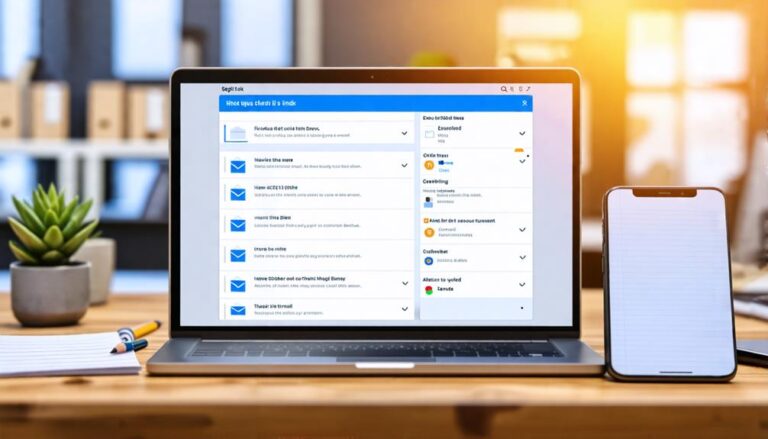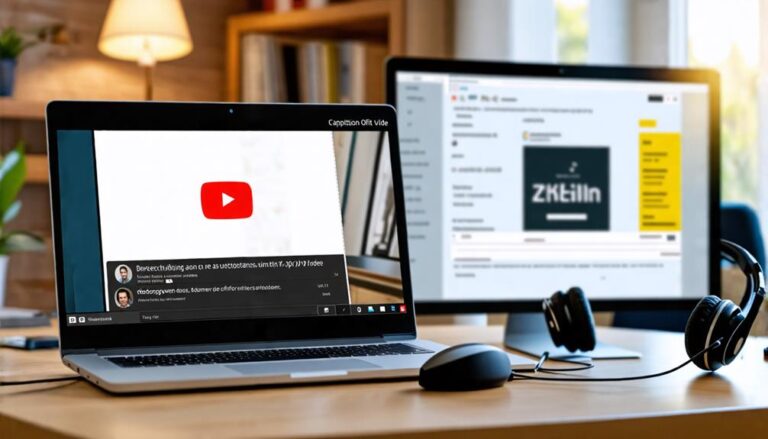Optimizing blog content for search engines involves several steps.
First, conduct thorough keyword research to identify relevant and high-traffic keywords. Use these keywords to create engaging and descriptive titles, headings, and subheadings for your blog posts. A well-structured blog post with clear and concise headings can improve user experience and search engine ranking.
Next, optimize your blog post's meta tags, including the title tag, meta description, and keyword tag. The title tag should be a brief and descriptive title of your blog post, while the meta description should be a short summary of your post. Use your target keywords in both the title tag and meta description.
Building high-quality backlinks from other websites to your blog is also crucial for search engine optimization. You can build backlinks by guest posting on other websites, participating in online communities, and sharing your content on social media.
To implement these optimization techniques, start by researching and selecting your target keywords. Use online tools such as Google Keyword Planner, Ahrefs, or SEMrush to find relevant and high-traffic keywords. Then, create a well-structured blog post with clear and concise headings, and optimize your meta tags with your target keywords.
Once your blog post is published, share it on social media and engage with your audience to encourage sharing and linking. Build high-quality backlinks by guest posting on other websites and participating in online communities.
Finally, monitor your website's traffic and adjust your optimization strategy as needed to improve your search engine ranking.
Understanding Search Engine Algorithms
As a side hustler, understanding the intricacies of search engine algorithms is crucial for optimizing your online content and increasing visibility.
Search engines constantly update their algorithms to improve search result relevance and user experience, which can significantly impact your side hustle's online presence. Staying informed about the latest algorithm changes is essential to maintain your search engine rankings and stay competitive.
To stay ahead, side hustlers should monitor search engine updates, analyzing the potential impact on their content strategies.
For instance, Google's emphasis on mobile-friendliness and page speed has forced side hustlers to adapt their website designs and optimization approaches.
By understanding the rationales behind algorithm changes, side hustlers can anticipate future updates and adjust their strategies accordingly.
This proactive approach enables them to maintain their online visibility, attract more customers, and ultimately grow their side hustle.
Conducting Keyword Research
To inform a successful blog content optimization strategy, conducting thorough keyword research is essential.
This process begins with brainstorming keyword ideas that align with your content goals and target audience, followed by analyzing keyword data to identify relevant search terms and phrases.
Brainstorming Keyword Ideas
Identifying relevant keywords for your side hustle is crucial to creating optimized online content, and it begins with a thorough brainstorming process that incorporates effective keyword research techniques.
To generate an extensive list of keyword ideas for your side hustle, consider using long tail keywords that target specific phrases with lower competition and higher conversion rates, such as 'online freelance writing' or 'part-time virtual assistance.'
Analyze keyword intent to determine whether users are searching for informational content on starting a side hustle, navigational content on side hustle platforms, or transactional content on side hustle opportunities.
Conduct competitor analysis to identify gaps in the side hustle market and areas where your content can outperform existing content.
Niche targeting allows you to cater to specific segments of the side hustle community, increasing the relevance and effectiveness of your content.
Consider seasonal trends and voice search patterns to create timely and optimized content, such as 'summer side hustles for students' or 'voice search for freelance services.'
For location-based side hustles, incorporating local SEO strategies can help target specific geographic regions.
Finally, identify content gaps in your existing side hustle content to determine areas where new content can fill a void and attract more users.
Analyzing Keyword Data
Analyzing keyword data helps refine and prioritize side hustle ideas by examining search volume, competition, and relevance. This involves studying keyword trends to identify popular and emerging topics related to side hustles, such as freelancing, online businesses, and entrepreneurship.
| Keyword | Search Volume |
|---|---|
| 'side hustle ideas' | 10,000 |
| 'online business opportunities' | 8,000 |
| 'passive income streams' | 5,000 |
| 'freelance writing jobs' | 3,000 |
| 'entrepreneurship tips' | 2,000 |
Conducting a competitive analysis is also crucial to understand the competitive landscape and identify gaps in the side hustle market, enabling the creation of content that meets the audience's needs and stands out from the competition.
Creating SEO-Friendly Titles
Crafting SEO-Friendly Titles for Side Hustles: A Key to Online Success
When creating titles for side hustle blogs, it's crucial to consider the importance of title length. A title that is too long may be truncated in search engine results pages (SERPs), while a title that is too short may lack descriptive power, negatively impacting side hustle online visibility.
Aim for a title length of 55-60 characters, including spaces, to guarantee ideal display in search results.
When crafting titles, incorporating emotional appeal can significantly boost side hustle blog engagement. Use action-oriented verbs and descriptive adjectives to create a sense of urgency and excitement around the side hustle, increasing click-through rates, social shares, and bookmarking.
Additionally, ensure the title accurately reflects the side hustle content and includes relevant keywords to attract the target audience.
Optimizing Blog Post Structure
To maximize the impact of blog content, it is essential to optimize the structure of each post, carefully organizing content to facilitate effective communication and enhance readability.
A well-structured blog post not only improves user experience but also increases the chances of search engines crawling and indexing the content accurately.
Organizing Content Effectively
Structuring content for a side hustle blog post in a logical and intuitive manner is crucial for capturing reader interest and conveying key messages clearly and efficiently. A well-organized content hierarchy is vital in directing the reader's attention to the most important information, such as monetization strategies, marketing tips, and productivity hacks, while also addressing user intent by providing relevant and valuable content.
To achieve this, consider the following key elements in organizing content effectively for a side hustle audience:
- Clear headings and subheadings: Organize content into sections using descriptive headings and subheadings to facilitate scanning and navigation, allowing readers to quickly find information on topics like freelancing, online courses, or affiliate marketing.
- Concise introductory paragraph: Craft a compelling and informative introduction that clearly conveys the purpose and relevance of the content, such as achieving financial freedom or turning a passion into a part-time business.
- Focused content sections: Use distinct content sections to address specific side hustle topics or ideas, promoting clarity and reducing cognitive overload, such as time management, networking, or self-care.
Enhancing Readability Online
Boosting Side Hustle Success with Readability Optimization
As a side hustler, optimizing your blog post structure is crucial for driving engagement, comprehension, and conversion among your audience. By leveraging key readability strategies, you can create a seamless online reading experience that sets your side hustle up for success.
Effective bloggers use header tags (H1, H2, H3), concise paragraphs, and bullet points to create scannable content that facilitates easy navigation. Clear typography choices, such as fonts and colors that convey a cohesive visual identity, can establish credibility and professionalism for your side hustle brand.
Strategic incorporation of white space, segmenting lengthy content into manageable chunks, and utilizing actionable language contribute substantially to readability. By using call-to-actions (CTAs) and uploading engaging images and multimedia components, you can create engaging narratives that foster social sharing, authentic dialogue, and promising partnerships for your side hustle.
A readability-oriented blog, thoughtfully crafted to optimize blog post structure and weigh typography and content layout choices effectively, ultimately garners an audience with purpose and drives side hustle growth.
Using Relevant Meta Tags
When creating a side hustle website or blog, incorporating relevant meta tags can significantly improve the crawlability and visibility of your online content, ultimately driving more traffic and potential customers to your platform.
Understanding the different types of meta tags and their optimal placement is crucial for effective optimization. The most essential meta tags for side hustles include:
- Title tags: Set the title of your webpage, appearing in search engine results pages (SERPs) and browser tabs, helping clients identify your services or products.
- Meta descriptions: Offer a clear summary of your webpage's content, impacting search engine rankings and enticing potential clients to click through to your site.
- Keywords tags: Specify relevant keywords and phrases connected to your side hustle, improving search engine indexing and potential client visibility.
Building High-Quality Backlinks
As a side hustler, building a strong online presence is crucial for attracting potential clients and customers. One effective way to do this is by creating a network of high-quality backlinks from authoritative sources in your niche. These backlinks not only improve your website's search engine rankings but also drive targeted traffic and increase conversion rates.
| Link Building Strategy | Benefits | Implementation |
|---|---|---|
| Guest Blogging | Establish authority, build relationships with potential clients | Write high-quality content for relevant blogs in your niche |
| Content Partnerships | Increase reach, build trust with your target audience | Collaborate with influencers, other side hustlers, or complementary businesses |
| Social Sharing | Drive traffic, boost engagement with your content | Share content on social media platforms where your target audience is active |
| Authority Websites | Improve credibility, increase traffic from your target audience | Get featured on authoritative websites in your niche |
| Broken Linkbuilding | Replace broken links, build backlinks from relevant websites | Find and replace broken links on websites related to your side hustle |
Tracking SEO Performance Metrics
Monitoring key SEO performance metrics is crucial to measuring the effectiveness of your side hustle's online marketing efforts and identifying areas for optimization. Utilizing SEO tools, such as Google Analytics and SEMrush, enables performance benchmarking and competitor analysis, providing valuable insights into traffic sources, conversion rates, and user engagement.
To effectively track SEO performance, consider the following key metrics:
- Traffic sources and conversion rates to evaluate the quality of backlinks and content relevance to your side hustle.
- User engagement metrics, such as bounce rate and time on page, to assess content quality and user experience on your side hustle website.
- Ranking fluctuations to identify potential issues with content or backlinks affecting your side hustle's online visibility.
Regular content auditing and analysis of these metrics inform data-driven decisions, enabling side hustlers to refine their content strategy, improve user experience, and increase search engine rankings.
Conclusion
By skillfully maneuvering through the ever-evolving landscape of search engine optimization, blog content can be catapulted to unprecedented heights of online visibility.
Like a master puzzle, the disparate pieces of keyword research, optimized titles, meta tags, structured content, and high-quality backlinks coalesce to form a cohesive whole.
As the metrics of success reveal themselves, data-driven decisions forge a path of refinement, culminating in heightened user engagement, increased traffic, and ultimately, augmented conversions.
















































0
View comments